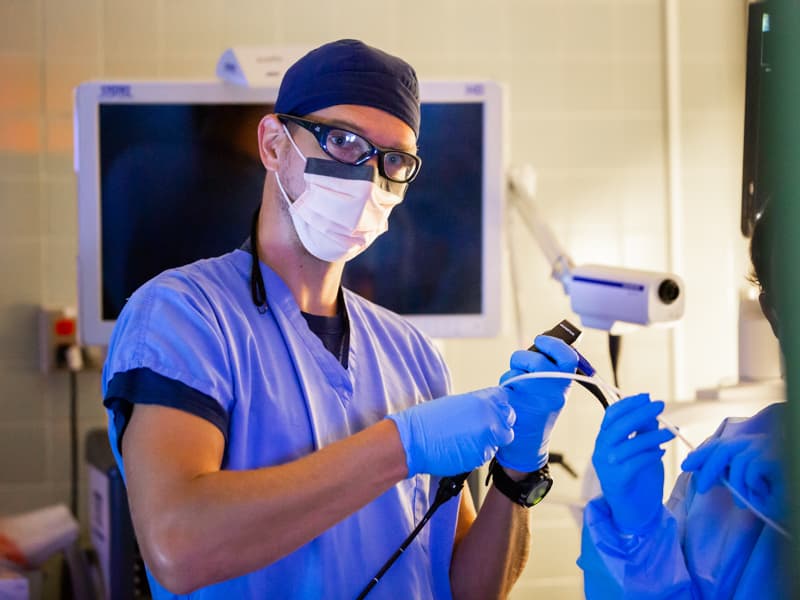
Inhale, then exhale: New lung procedure makes it all possible
Published on Monday, October 5, 2020
By: Ruth Cummins
Ever since a 2014 hospitalization for double pneumonia that required she be placed on a ventilator, Tina Price has coped with emphysema and struggled to breathe.
“I had chronic bronchitis before that,” said Price, who lives in the rural outskirts of Crystal Springs. “When I got home, I couldn’t walk. I couldn’t do anything.”
A second hospitalization in 2017 for problems that included breathing challenges made things worse, Price said. When she breathed in air, she had difficulty breathing it out. Price eventually went on oxygen at her home, and doctors floated the possibility of a lung transplant.
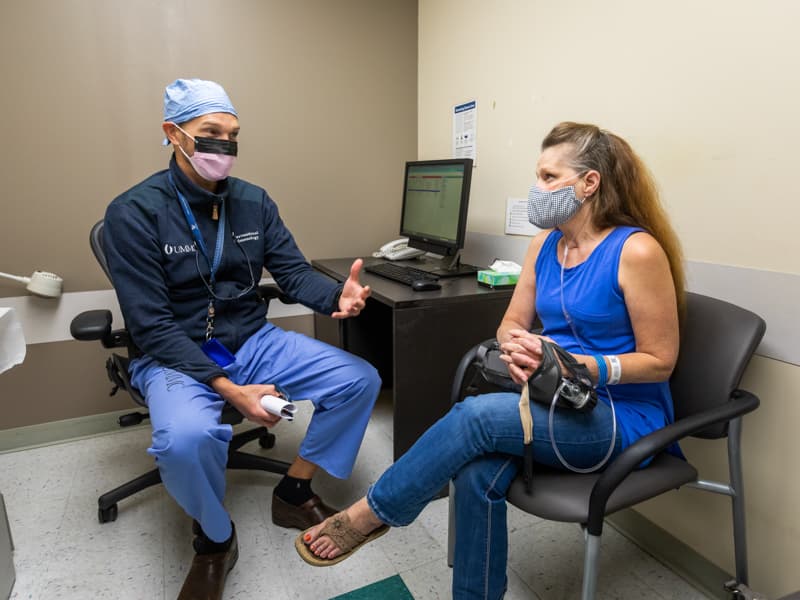
“I told them that would not be happening,” said Price, 55. “It takes too long, it takes too much out of your life, and I have children and grandchildren.”
But then, her University of Mississippi Medical Center pulmonologist, Dr. Trey Abraham, associate professor of medicine, suggested a much simpler procedure that could give her relief and restore her quality of life. The minimally invasive procedure, an endoscopic lung volume reduction, requires about a three-day hospitalization. It places one or more one-way valves in the diseased portion of the lungs, closing them off and directing breathing activity to the healthy lung area.
Two weeks after surgery, Price said, “I don’t have to gasp for air anymore. If I overexert, I feel it, but it’s a lot better than it was. A lot better.”
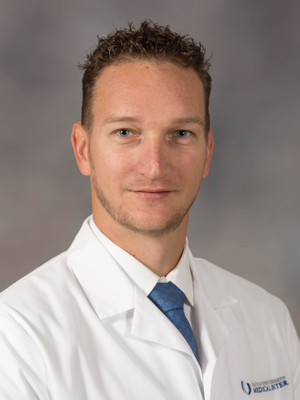
Dr. Michal Senitko, assistant professor of medicine and surgery and section chief of interventional pulmonology, performed the procedure in September. It was the first in the state for that particular procedure that received FDA approval in 2018.
Patients who are candidates cope with obstruction of the air traveling down the windpipe and into the lungs through two large tubes, or bronchi, located inside the lungs. The lungs rely on the natural elasticity of the bronchial tubes and air sacs to thrust air out of the lungs, but their disease robs them of the elasticity and the air becomes trapped. That makes the lungs hyper-inflated, producing shortness of breath, wheezing and coughing. It puts pressure on the healthy parts of the lung and the diaphragm and can cause damage that is irreversible and worsens over time.
In evaluating patients, Senitko said, he and his team look carefully at how much their lungs are hyper-inflating. “They have a constant feeling that they can’t take a deep breath, because their lungs are full of air,” he said.
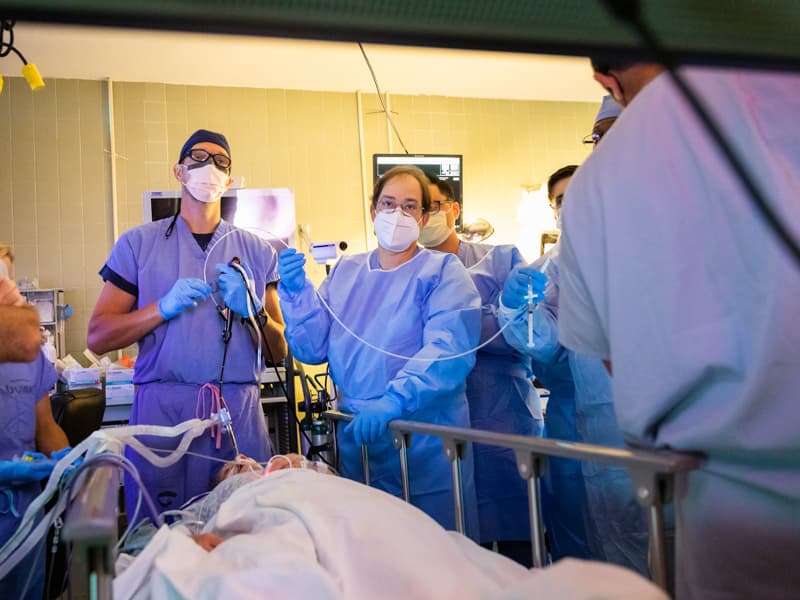
Other tests, including scans and an evaluation of pulmonary function, are required before a patient is cleared for the procedure. If the patient smokes, they must stop for six months before their evaluation can move forward. “Smoking cessation counseling is part of our daily activities,” Senitko said.
The surgery is performed under general anesthesia. Using a bronchoscope with a camera attached to the end, Senitko inserts the bronchoscope into the airway and deploys tiny one-way valves into the disease lobes. The valves block the damaged areas of the lungs, preventing air from traveling there. It causes the diseased portion to collapse, giving more space for the healthy portions of the lobe to expand.
Price said she felt a difference when she woke up from surgery. “I took a deep breath, and I said, ‘I can breathe!’” she remembered.
Data is still being collected because the procedure is so new, but patients overall are experiencing sustained benefit, Senitko said. There are possible complications – for example, tiny tears in the lung lining that allow air to escape. “We are prepared for those instances, and that is the main reason for the patient being observed in the hospital for three days,” he said.
Before the procedure, Price said, “I had to sit around while everyone else had fun. “
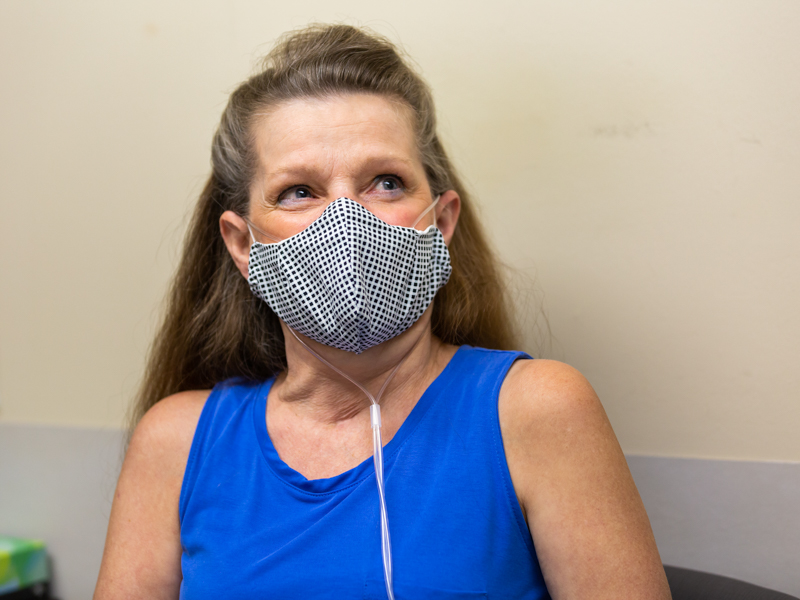
That was excruciating for the grandmother of 11. “They didn’t understand why their Mimi couldn’t do things with them like she used to – going to the zoo, or play at the park,” she said. “I was losing weight. I didn’t have an appetite, and I wasn’t sleeping like I was supposed to.”
Compared to a more invasive surgery. “I told Dr. Abraham this procedure made more sense,” Price said. “Let’s go in and kill off the problem, and see what the good parts of my lungs can do.”
Lung volume reduction is one of a growing number of novel procedures performed by Senitko and his team to help Mississippians whose lungs, for a variety of reasons, aren’t functioning well enough for them to comfortably breathe.
“It’s important to build an advanced program, also for benign diseases, with a variety of new and novel treatments for COPD, emphysema, bronchitis and asthma,” he said. “This is becoming the standard of care in the nation and world.”
Although she’s trying to take it easy, Price is eager to make up for years of lost time. “I have plans,” she said.
“I have flowers that really need tending to,” Price said. “We’re still getting peas and butterbeans and okra. Both my eggplant trees are full.”
She hopes to wean off the last of her oxygen and to shed a small, lingering cough.
“I just love food,” she said. “Before the surgery, my stomach was extended and if you looked at me, you would have thought I weighed more than I did. That’s all gone now.
“I’m going to eat anything and everything.”


